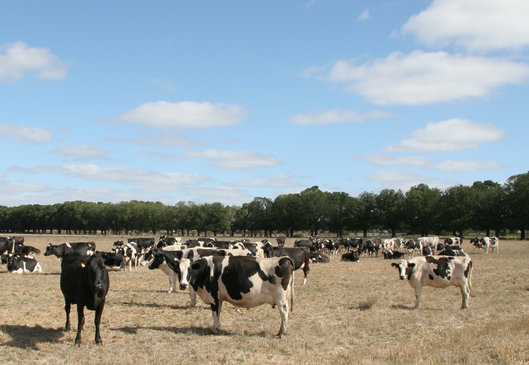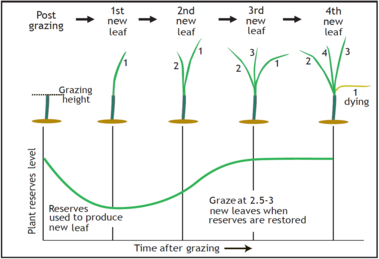Managing pasture through drought
You can’t influence growth during the dry as nothing grows. The aim is look after some pastures (particularly your best paddocks) for quicker recovery when it rains, to help set up winter and next spring.
- Decrease feed demand through destocking.
- Look after good permanent pastures by leaving 2-3 cm cover on sheep pastures, 3-4 cm for cow/cattle grazed.
- Sacrifice poor paddocks, or those due for renewal, and feed out supplements to stock on these.
- After rain, don’t restock recovering pastures too early.

Why is management important?
Drought is an on-going threat in many areas. Good management through drought will give farms much faster recovery after drought.
If pastures survive the dry they won’t need resowing, which is a major cost saving. Pastures in good condition will also recover much faster, greatly reducing feed-out costs.
Depending on what happens, this may mean systems are back to normal in autumn (rather than the following spring), make for a much better winter. Good pasture supply may also create opportunities for buying stock coming out of the dry.
Drought management strategies
Decrease feed demand. There are a range of options including selling trading stock, getting rid of culls, through to once-a-day milking or drying some cows off based on condition. It can be useful to set key indicators that are monitored and trigger different options.
Look after the best pastures. The critical point to understand about managing grass-based pastures through the dry is that they have their energy reserves above the ground (not in the roots). So look after the best pastures by:
- Leaving some cover on them - this does not mean rank growth, but 2-3 cm length for sheep pastures, 3-4cm length for cow/cattle grazed. Don’t bare the pastures out.
- Destock them for the duration of the dry.
- Feed out supplement in sacrifice paddocks.
Sacrifice poor paddocks. The way to look after your best pastures is to keep stock on the poor producing paddocks, that may be old species, or those you already plan to renew. Feed out supplement to stock on these.
Once the drought breaks
Allow pastures to recover and build up their carbohydrate reserves before restocking. Ryegrass tillers need 2-3 leaves before grazing so plant reserves will be replenished and they will regrow well, as shown in the diagram below. Grazing the first ‘green pick’ can kill a pasture.

Pasture species
Species with improved drought tolerance, such as cocksfoot, pasture brome, or lucerne should be considered in areas prone to drought.
One reason cocksfoot is so persistent is that it has a tough basal crown, which animals cannot graze out. Because other more palatable grass species do not have this characteristic, you need to avoid over-grazing in drought periods.
Lessons from drought
At a farm systems level it is useful to review the longer-term farm strategies and how well they worked. Can improvements be made in areas such as: type of livestock run, stocking rate or calving date, trading policies, and use of crops or supplements.

